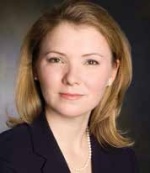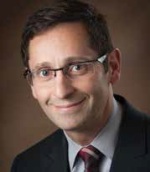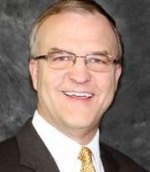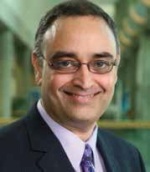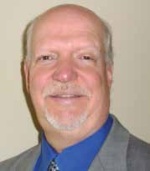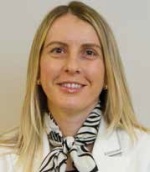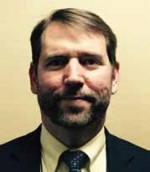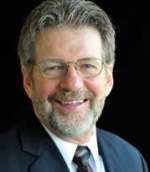Health care technology management viewpoints - Clinical engineers speak out
May 09, 2015
by John W. Mitchell, Senior Correspondent
When one of the leaders interviewed for this article was asked about emerging Healthcare Technology Management trends, their response was: “It depends on what you mean by Healthcare Technology Management.”
This insightful statement is the overriding theme of DOTmed’s annual look at the health care technology management sector. The average “break-fix” operation at any hospital now has health care economics, informatics and strategic planning staking out territory in the HTM agenda.
The realization that the performance metrics expected under the Affordable Care Act, such as population health management (getting paid more to keep people healthy rather than when they become ill) and value-based purchasing (hospital and physician pay for performance) are only possible through meaningful information sharing. This has attracted the attention of the hospital C-Suite which is now dedicating large budgets to create electronic health record (EHR) systems needed to succeed.
Almost every very medical device in a hospital now has a computer chip and software. Every clinician who lays hands on a patient needs to have, in real time, what the device knows. It is clear that hospital leadership has elevated HTM to an unprecedented level of strategic importance in the scheme of things, which is reflected in the work our experts do every day to get devices communicating across electronic health records.
A recent study indicates that for nurses, device interconnectivity across the electronic medical record cannot happen fast enough. Results of a Harris Poll-sponsored released in March by the West Health Institute revealed that half of a sample base of nurses report that they have seen a medical error caused by a lack of coordination among medical devices.
It’s no wonder the demand for experts to improve the performance of medical devices remains strong. The Bureau of Labor Statistics expects a 20 percent increase in hiring over the next three years. The nine experts/leaders interviewed for the 2015 HTM Trends review are:
• Keith Chapman, Director of Clinical Engineering, Virginia Commonwealth University Health Systems
• Chuck Demanche, MBA, CRA a career hospital HTM professional and imaging director. He currently works through Soyring Consulting.
• Izabella Gieras, Director, Clinical Technology at Huntington Hospital, Pasadena, CA – Past President, American College of Clinical Engineering (ACCE)
• Patrick Harning, Assistant Vice President, Clinical Engineering, Catholic Healthcare Initiatives, Denver, CO
• Jennifer Jackson, Director of Clinical Engineering & Device Integration, Cedars-Sinai Medical Center, Los Angeles, CA – Past
President ACCE
• James Keller, MS Vice President Health Technology Evaluation and Safety, - ECRI Institute, Plymouth Meeting, PA – Past President of the ACCE.
• Purna Prasad, Ph.D, C.C.E. Director of Clinical Technology & Biomedical Engineering, Stanford Health Care
• Skip Smith, Vice President, Physical Asset Services - Catholic Health Initiatives, Denver, CO
• Paolo Zambito, Senior Vice President Strategy and Business Development, LCMC Health, New Orleans, LA. (Also a former hospital CEO & COO)
HCBN - What emerging HTM trends are on the very edge of the radar right now?
Jennifer Jackson, Cedars-Sinai – No doubt, device integration. In the last year my department worked to link 1,500 IV pumps with the electronic medical record. We’re an 851-bed hospital and on a weekly basis generate up to 13,000 medication orders. Whatever we can do to help our nurses eliminate transcription errors through integration is a good project. Through beta testing trial and error we’re evaluating new opportunities for additional device integration and adopting new technology.
Purna Prasad, Stanford Health Care – There are some very exciting developments. For example, technology has moved out of the hospital into the home with patients using wearable devices and tethered devices such as infusion pumps and monitors. These patients now come to the biomed department to get batteries charged and the equipment calibrated, so we ‘re now caring for more patients in an outpatient setting. These are new demands that require a very enhanced set of skills for our profession.
Paolo Zambito, LCMC Health –LCMC Health is a young organization. We started as Children’s Hospital and through acquisition, and management agreements we have expanded rapidly to a five-hospital system. This includes two community hospitals, and two Louisiana safety net/teaching hospitals, one of which is a replacement hospital being built by the state to replace Charity Hospital destroyed in Hurricane Katrina. We have a lot of data flowing across the electronic medical record that are not all linked yet because our health system has grown so quickly.
We just hired our system Chief Information Officer. So going forward, we’re looking at the bigger strategic issues of the best way to get all of our disparate devices to communicate, to turn stand-alone facilities into a system. At LCMC, we want to make sure that as we make decisions about equipment and vendors, we are doing something meaningful with the data at the bedside that translates to improved patient outcomes.
Izabella Gieras, Huntington Hospital– This year one of the projects we’ll be working on is to meet the deliverable standard of the National Patient Safety Goal to reduce alarms. Hospitals must have protocols and education in place to reduce medical device non-actionable false alarms by 2016. Non-actionable false alarms contribute to caregiver fatigue and threaten patient safety. Patients don’t like it either.
Chuck Demanche, Soyring Consulting – The biggest change I see emerging is how can biomed contribute to cost reduction under the new reality of the Affordable Care Act. Biomed has traditionally been an expense department but now administrators are asking these managers to contribute with work optimization in clinical departments through integration. This is the reality, given thinning margins as hospitals and doctors make the transition from fee-for- service to outcomes and wellness. Another big emerging issue is that a lot of medical devices under the care of the Biomed Department are becoming wireless. So security of protected patient information is something all hospitals must figure out.
HCBN - What trends in capital spending in HTM are you noting?
Jim Keller, ECRI – Four trends are worth noting this year. Interest in disinfection systems is nearly double. Ebola, general infection control, and the cost of acquired infections are key factors. Because more and more clinicians want to view imaging and patient data in the OR, we’re seeing an increased number in purchases of OR integration systems.
There is a significant uptick in purchases of the St. Jude’s CardioMEM Heart Failure Monitoring System. This is partly due to the manufacturer’s claims that the system helps reduce hospital readmissions. This is related to an overall trend we expect to see over the next few years with the big growth growth we expect in home monitoring systems. And we have seen increased interest from hospitals for 128 slice and higher CT scanner technology.
Keith Chapman, VCU Health Systems – We’re taking a hard look at the addition of any new equipment and asking the question, “What Value does it bring to our operation and patient care?” We’re not going to buy new equipment just because a company wants to sell it to us. For example, is the resolution of a new 64-slice CT needed or is the resolution of the existing 16-slice CT meeting the patients’ need? We’re looking at extending the life of existing equipment and we have committees across many departments that review capital equipment purchases.
Skip Smith, CHI – We have three university hospitals in the CHI system, so we have a real demand for new technology. We have to balance this against the reality that capital spending is very surgical right now. We visit our hospitals every three years to set priorities for new equipment. All this is done working in tandem with the hospital administrator. To reduce costs, we’re also increasing training to develop in-house expertise to service equipment, rather than relying on OEM (Original Equipment Manufacturer).
Jennifer Jackson, Cedars-Sinai – As I said, we’re interested in equipment that will integrate well across the EHR (Electronic Health Record). But we’re also just the right size with enough specialties to be able to have an opportunity to test new technology, such as some of the advanced imaging being created in CT. So this creates new demand for biomed services. Something we think has potential is using information from across the EHR to make computer-assisted predictive decisions about health risks, such as cardiac events.
HCBN – How will HTM help hospitals and physicians achieve the goals set in the Affordable Care Act, such as value-based purchasing (VBP)?
Jim Keller, ECRI - It’s always been the role of clinical engineering to help the hospital management to make good decisions about whether to buy a particular technology, so that hasn’t changed under ACA. But I do see more and more hospitals forming interdisciplinary VBP committees. Clinical engineering has an important role in these committees. These teams take a more evidence-based approach to decision making than perhaps has been done in the past – it’s not so much about what a particular doctor might want to purchase, for example. There is also a lot more emphasis on patient safety (a key focus of the ACA). So more review of the recall history or other safety matters for devices being considered for purchase will be an important part of the VBP process.
Paolo Zambito, LCMC Health – Our focus is on the patient experience and outcomes, so one of the things we’re looking at is how do we increase information access for patients? Because we have so many specialists and subspecialists, how do we make it easy for patients to make decisions about the doctor they need to see, down to making an appointment?
Then, once they have been referred, what is the best way to send information flow back to referring physicians so the best decisions are made for the patients? For us it’s achieving a rhythm, and rigor is paramount in following our strategic plan to achieve value in all our systems, including biomed. For instance, one of our strategies is to continue to restore primary care in our service area that took a hit after Katrina. Primary care is key in achieving the goals under the ACA and it needs a good functioning HER as well as integration with an HIE. Clinical engineering has a key role in creating that functionality. It is a biomed issue, but it’s really the same issue for every department – there can’t be silos to meet the challenges that lay ahead.
Patrick Harning, CHI – Everyone has to be on the same page about what is available on the EHR, which helps clinicians do their work efficiently. I think redundancy of information is important to make sure the info is always available to them in the event we have to shut any system down. The clinicians in the tech-heavy departments, such as in the OR and cath labs, are also counting on biomed to be savvy with smart new technology – including handheld devices - as a tool to help improve their workflow.
HCBN – What is the state of the relationship between HTM managers and clinical managers?
Purna Presad, Stanford Health Care – Three years ago Stanford adopted LEAN as an enterprise-wide methodology to optimize work flow. Every day from 7:30 to 9:30 all calendars are blocked off so that the hospital leadership can make rounds in the hospital. On every unit, a biomed representative makes rounds with the manager to make sure that equipment is operating properly. In nursing units, ORs and cath labs, biomed prepares the equipment for use at the beginning of every shift change to make sure it is functional. This whole system approach has created a really good working floor not just between biomed and the clinicians on the floor, but all the ancillary departments, because it is the standard that our leadership models and expects.
Izabella Gieras, Huntington Hospital – For the first time, those of us in health technology (HTM) are launching hospital-wide initiatives in order to achieve the device integration and information sharing that the bedside caregivers need and want. At the same time any change is stressful, so it’s part of our job now to help calm anxiety on the floors by being available to educate and consult as we go through a device conversion. But once the caregivers get used to the workflow improvement the devices bring by communicating with the EHR, we get called pretty quickly if they have to go back to the old way of manually charting because something is not working right. So this has changed the relationship for the better – biomed staff are much more visible and appreciated on the floors.
Jennifer Jackson, Cedars-Sinai – We all have the same job – to help the patient. It can be easy to get distracted from this point so we have to have confidence working together to pick the right strategy. Clinical managers want us to help optimize their workflow and we’re in a good position to support and help them. The first question is always: Is technology the answer to a problem? Because sometimes it isn’t. But the relationship has evolved where we can more easily have those kinds of discussions.
Chuck Demanche, Soyring Consulting – Biomed has worked more to get the clinical managers involved. This helps the clinicians avoid that deer-in-the-headlights look when a Joint Commission (JC) inspector asks a clinician about their equipment. Evolving standards under the JC have created the expectation that clinical managers know about the equipment they use. So I think there’s more understanding when biomed shows up to perform PM (preventative maintenance) on a device – it’s not viewed as an inconvenience.
Paolo Zambito, LCMC Health– From my perspective the relationship is good. I started my career as a nurse – I got my training at Charity Hospital, which we are rebuilding as University Medical Center. Of all my degrees, my nursing degree is the one that helps me the most, as it gives me insight into what the clinical staff needs and how processes should be integrated with biomed, and we see how much has changed over the years and how the clinical engineering aspect of care has to be well integrated. Integration is so important, as there are many patient touch points in our system, from the clinic setting to the hospital and everything in between, including our focus on research and clinical trials.
Keith Chapman, VCU Health Systems – Biomed has moved past its longtime role of a break-fix ancillary service. We serve much more in a consultant role now. A clinician will call us and ask if we can get a device to measure something they need and it’s our job to listen and come up a solution that allows us to change the parameters on the machine through the software, to better serve the staff on the floor and improve patient care.
HCBN – What do patients need to know about HTM? Izabella Gieras, Huntington Hospital – It would be good if patients knew the basics. But we are often in patient rooms when a device is not working properly and the biomed tech often talks to patients. A lot of patients ask questions about the devices being used as part of their care. They want to know why an alarm is going off, for example. Part of the orientation we do with our staff is how to talk to patients and their caregivers.
Jennifer Jackson, Cedars-Sinai – My family and friends certainly have no idea what I do in the hospital. The doctors and nurses are the face of who and what a patient sees. In that regard we’re like other ancillary departments in the hospital who are there to take care of patients. Our job is to keep the technology maintained and operating perfectly so patients don’t notice it - like a car. You notice if your car isn’t working right.
Chuck Demanche, Soyring Consulting – The bottom line is it’s our job to make sure that patients realize the great benefit of medical devices and systems, and make sure no patient gets hurt from these devices.
Skip Smith, CHI – If I were talking to my mom, I’d tell her that we want to contribute to a good patient outcome. Our sweet spot in biomed is a good result without delay or harm. The biomed field actually evolved from the work of Ralph Nader in the 1960s, when he uncovered widespread problems with electrical safety in many devices, so we have a long tradition of making things safe, as well as effective.
HCBN – What advice would you give to someone early in their career about working in the HTM field? Jim Keller, ECRI – Biomed is a really good and valuable profession. I think the type of work biomed professionals will be doing in the future will be more highly regarded within hospitals and health care systems than maybe it has in the past, for some of the reasons we have discussed. It will certainly be more varied and impactful. The biomed professional must now step out of the proverbial basement to work as part of clinical teams. This requires really good communication skills in addition to a solid technical foundation.
Jennifer Jackson, Cedars-Sinai - When I hire, I look for someone who has very good communication skills – that is such an important part of the job now. It’s critical to be able to interpret what clinicians need and to understand their pain points in order to be empathetic. I also look for someone who is very trainable because hospital technology is evolving so quickly. It’s harder to understand now why a device is not meeting the needs of the user because sometimes it’s not the device that fails. Biomed is no longer a standalone service – its part of bigger system now. This requires different critical thinking skills than in the past.
Purna Prasad, Stanford Health Care – This is not a field to just collect a paycheck, you have to jump in with a passion. Doctors and nurses depend on us to be the interface with the patient, to translate what is going on inside the body into transferable data so the patient can be cured.
This insightful statement is the overriding theme of DOTmed’s annual look at the health care technology management sector. The average “break-fix” operation at any hospital now has health care economics, informatics and strategic planning staking out territory in the HTM agenda.
The realization that the performance metrics expected under the Affordable Care Act, such as population health management (getting paid more to keep people healthy rather than when they become ill) and value-based purchasing (hospital and physician pay for performance) are only possible through meaningful information sharing. This has attracted the attention of the hospital C-Suite which is now dedicating large budgets to create electronic health record (EHR) systems needed to succeed.
Almost every very medical device in a hospital now has a computer chip and software. Every clinician who lays hands on a patient needs to have, in real time, what the device knows. It is clear that hospital leadership has elevated HTM to an unprecedented level of strategic importance in the scheme of things, which is reflected in the work our experts do every day to get devices communicating across electronic health records.
A recent study indicates that for nurses, device interconnectivity across the electronic medical record cannot happen fast enough. Results of a Harris Poll-sponsored released in March by the West Health Institute revealed that half of a sample base of nurses report that they have seen a medical error caused by a lack of coordination among medical devices.
It’s no wonder the demand for experts to improve the performance of medical devices remains strong. The Bureau of Labor Statistics expects a 20 percent increase in hiring over the next three years. The nine experts/leaders interviewed for the 2015 HTM Trends review are:
• Keith Chapman, Director of Clinical Engineering, Virginia Commonwealth University Health Systems
• Chuck Demanche, MBA, CRA a career hospital HTM professional and imaging director. He currently works through Soyring Consulting.
• Izabella Gieras, Director, Clinical Technology at Huntington Hospital, Pasadena, CA – Past President, American College of Clinical Engineering (ACCE)
• Patrick Harning, Assistant Vice President, Clinical Engineering, Catholic Healthcare Initiatives, Denver, CO
• Jennifer Jackson, Director of Clinical Engineering & Device Integration, Cedars-Sinai Medical Center, Los Angeles, CA – Past
President ACCE
• James Keller, MS Vice President Health Technology Evaluation and Safety, - ECRI Institute, Plymouth Meeting, PA – Past President of the ACCE.
• Purna Prasad, Ph.D, C.C.E. Director of Clinical Technology & Biomedical Engineering, Stanford Health Care
• Skip Smith, Vice President, Physical Asset Services - Catholic Health Initiatives, Denver, CO
• Paolo Zambito, Senior Vice President Strategy and Business Development, LCMC Health, New Orleans, LA. (Also a former hospital CEO & COO)
HCBN - What emerging HTM trends are on the very edge of the radar right now?
Jennifer Jackson, Cedars-Sinai – No doubt, device integration. In the last year my department worked to link 1,500 IV pumps with the electronic medical record. We’re an 851-bed hospital and on a weekly basis generate up to 13,000 medication orders. Whatever we can do to help our nurses eliminate transcription errors through integration is a good project. Through beta testing trial and error we’re evaluating new opportunities for additional device integration and adopting new technology.
Purna Prasad, Stanford Health Care – There are some very exciting developments. For example, technology has moved out of the hospital into the home with patients using wearable devices and tethered devices such as infusion pumps and monitors. These patients now come to the biomed department to get batteries charged and the equipment calibrated, so we ‘re now caring for more patients in an outpatient setting. These are new demands that require a very enhanced set of skills for our profession.
Paolo Zambito, LCMC Health –LCMC Health is a young organization. We started as Children’s Hospital and through acquisition, and management agreements we have expanded rapidly to a five-hospital system. This includes two community hospitals, and two Louisiana safety net/teaching hospitals, one of which is a replacement hospital being built by the state to replace Charity Hospital destroyed in Hurricane Katrina. We have a lot of data flowing across the electronic medical record that are not all linked yet because our health system has grown so quickly.
We just hired our system Chief Information Officer. So going forward, we’re looking at the bigger strategic issues of the best way to get all of our disparate devices to communicate, to turn stand-alone facilities into a system. At LCMC, we want to make sure that as we make decisions about equipment and vendors, we are doing something meaningful with the data at the bedside that translates to improved patient outcomes.
Izabella Gieras, Huntington Hospital– This year one of the projects we’ll be working on is to meet the deliverable standard of the National Patient Safety Goal to reduce alarms. Hospitals must have protocols and education in place to reduce medical device non-actionable false alarms by 2016. Non-actionable false alarms contribute to caregiver fatigue and threaten patient safety. Patients don’t like it either.
Chuck Demanche, Soyring Consulting – The biggest change I see emerging is how can biomed contribute to cost reduction under the new reality of the Affordable Care Act. Biomed has traditionally been an expense department but now administrators are asking these managers to contribute with work optimization in clinical departments through integration. This is the reality, given thinning margins as hospitals and doctors make the transition from fee-for- service to outcomes and wellness. Another big emerging issue is that a lot of medical devices under the care of the Biomed Department are becoming wireless. So security of protected patient information is something all hospitals must figure out.
HCBN - What trends in capital spending in HTM are you noting?
Jim Keller, ECRI – Four trends are worth noting this year. Interest in disinfection systems is nearly double. Ebola, general infection control, and the cost of acquired infections are key factors. Because more and more clinicians want to view imaging and patient data in the OR, we’re seeing an increased number in purchases of OR integration systems.
There is a significant uptick in purchases of the St. Jude’s CardioMEM Heart Failure Monitoring System. This is partly due to the manufacturer’s claims that the system helps reduce hospital readmissions. This is related to an overall trend we expect to see over the next few years with the big growth growth we expect in home monitoring systems. And we have seen increased interest from hospitals for 128 slice and higher CT scanner technology.
Keith Chapman, VCU Health Systems – We’re taking a hard look at the addition of any new equipment and asking the question, “What Value does it bring to our operation and patient care?” We’re not going to buy new equipment just because a company wants to sell it to us. For example, is the resolution of a new 64-slice CT needed or is the resolution of the existing 16-slice CT meeting the patients’ need? We’re looking at extending the life of existing equipment and we have committees across many departments that review capital equipment purchases.
Skip Smith, CHI – We have three university hospitals in the CHI system, so we have a real demand for new technology. We have to balance this against the reality that capital spending is very surgical right now. We visit our hospitals every three years to set priorities for new equipment. All this is done working in tandem with the hospital administrator. To reduce costs, we’re also increasing training to develop in-house expertise to service equipment, rather than relying on OEM (Original Equipment Manufacturer).
Jennifer Jackson, Cedars-Sinai – As I said, we’re interested in equipment that will integrate well across the EHR (Electronic Health Record). But we’re also just the right size with enough specialties to be able to have an opportunity to test new technology, such as some of the advanced imaging being created in CT. So this creates new demand for biomed services. Something we think has potential is using information from across the EHR to make computer-assisted predictive decisions about health risks, such as cardiac events.
HCBN – How will HTM help hospitals and physicians achieve the goals set in the Affordable Care Act, such as value-based purchasing (VBP)?
Jim Keller, ECRI - It’s always been the role of clinical engineering to help the hospital management to make good decisions about whether to buy a particular technology, so that hasn’t changed under ACA. But I do see more and more hospitals forming interdisciplinary VBP committees. Clinical engineering has an important role in these committees. These teams take a more evidence-based approach to decision making than perhaps has been done in the past – it’s not so much about what a particular doctor might want to purchase, for example. There is also a lot more emphasis on patient safety (a key focus of the ACA). So more review of the recall history or other safety matters for devices being considered for purchase will be an important part of the VBP process.
Paolo Zambito, LCMC Health – Our focus is on the patient experience and outcomes, so one of the things we’re looking at is how do we increase information access for patients? Because we have so many specialists and subspecialists, how do we make it easy for patients to make decisions about the doctor they need to see, down to making an appointment?
Then, once they have been referred, what is the best way to send information flow back to referring physicians so the best decisions are made for the patients? For us it’s achieving a rhythm, and rigor is paramount in following our strategic plan to achieve value in all our systems, including biomed. For instance, one of our strategies is to continue to restore primary care in our service area that took a hit after Katrina. Primary care is key in achieving the goals under the ACA and it needs a good functioning HER as well as integration with an HIE. Clinical engineering has a key role in creating that functionality. It is a biomed issue, but it’s really the same issue for every department – there can’t be silos to meet the challenges that lay ahead.
Patrick Harning, CHI – Everyone has to be on the same page about what is available on the EHR, which helps clinicians do their work efficiently. I think redundancy of information is important to make sure the info is always available to them in the event we have to shut any system down. The clinicians in the tech-heavy departments, such as in the OR and cath labs, are also counting on biomed to be savvy with smart new technology – including handheld devices - as a tool to help improve their workflow.
HCBN – What is the state of the relationship between HTM managers and clinical managers?
Purna Presad, Stanford Health Care – Three years ago Stanford adopted LEAN as an enterprise-wide methodology to optimize work flow. Every day from 7:30 to 9:30 all calendars are blocked off so that the hospital leadership can make rounds in the hospital. On every unit, a biomed representative makes rounds with the manager to make sure that equipment is operating properly. In nursing units, ORs and cath labs, biomed prepares the equipment for use at the beginning of every shift change to make sure it is functional. This whole system approach has created a really good working floor not just between biomed and the clinicians on the floor, but all the ancillary departments, because it is the standard that our leadership models and expects.
Izabella Gieras, Huntington Hospital – For the first time, those of us in health technology (HTM) are launching hospital-wide initiatives in order to achieve the device integration and information sharing that the bedside caregivers need and want. At the same time any change is stressful, so it’s part of our job now to help calm anxiety on the floors by being available to educate and consult as we go through a device conversion. But once the caregivers get used to the workflow improvement the devices bring by communicating with the EHR, we get called pretty quickly if they have to go back to the old way of manually charting because something is not working right. So this has changed the relationship for the better – biomed staff are much more visible and appreciated on the floors.
Jennifer Jackson, Cedars-Sinai – We all have the same job – to help the patient. It can be easy to get distracted from this point so we have to have confidence working together to pick the right strategy. Clinical managers want us to help optimize their workflow and we’re in a good position to support and help them. The first question is always: Is technology the answer to a problem? Because sometimes it isn’t. But the relationship has evolved where we can more easily have those kinds of discussions.
Chuck Demanche, Soyring Consulting – Biomed has worked more to get the clinical managers involved. This helps the clinicians avoid that deer-in-the-headlights look when a Joint Commission (JC) inspector asks a clinician about their equipment. Evolving standards under the JC have created the expectation that clinical managers know about the equipment they use. So I think there’s more understanding when biomed shows up to perform PM (preventative maintenance) on a device – it’s not viewed as an inconvenience.
Paolo Zambito, LCMC Health– From my perspective the relationship is good. I started my career as a nurse – I got my training at Charity Hospital, which we are rebuilding as University Medical Center. Of all my degrees, my nursing degree is the one that helps me the most, as it gives me insight into what the clinical staff needs and how processes should be integrated with biomed, and we see how much has changed over the years and how the clinical engineering aspect of care has to be well integrated. Integration is so important, as there are many patient touch points in our system, from the clinic setting to the hospital and everything in between, including our focus on research and clinical trials.
Keith Chapman, VCU Health Systems – Biomed has moved past its longtime role of a break-fix ancillary service. We serve much more in a consultant role now. A clinician will call us and ask if we can get a device to measure something they need and it’s our job to listen and come up a solution that allows us to change the parameters on the machine through the software, to better serve the staff on the floor and improve patient care.
HCBN – What do patients need to know about HTM? Izabella Gieras, Huntington Hospital – It would be good if patients knew the basics. But we are often in patient rooms when a device is not working properly and the biomed tech often talks to patients. A lot of patients ask questions about the devices being used as part of their care. They want to know why an alarm is going off, for example. Part of the orientation we do with our staff is how to talk to patients and their caregivers.
Jennifer Jackson, Cedars-Sinai – My family and friends certainly have no idea what I do in the hospital. The doctors and nurses are the face of who and what a patient sees. In that regard we’re like other ancillary departments in the hospital who are there to take care of patients. Our job is to keep the technology maintained and operating perfectly so patients don’t notice it - like a car. You notice if your car isn’t working right.
Chuck Demanche, Soyring Consulting – The bottom line is it’s our job to make sure that patients realize the great benefit of medical devices and systems, and make sure no patient gets hurt from these devices.
Skip Smith, CHI – If I were talking to my mom, I’d tell her that we want to contribute to a good patient outcome. Our sweet spot in biomed is a good result without delay or harm. The biomed field actually evolved from the work of Ralph Nader in the 1960s, when he uncovered widespread problems with electrical safety in many devices, so we have a long tradition of making things safe, as well as effective.
HCBN – What advice would you give to someone early in their career about working in the HTM field? Jim Keller, ECRI – Biomed is a really good and valuable profession. I think the type of work biomed professionals will be doing in the future will be more highly regarded within hospitals and health care systems than maybe it has in the past, for some of the reasons we have discussed. It will certainly be more varied and impactful. The biomed professional must now step out of the proverbial basement to work as part of clinical teams. This requires really good communication skills in addition to a solid technical foundation.
Jennifer Jackson, Cedars-Sinai - When I hire, I look for someone who has very good communication skills – that is such an important part of the job now. It’s critical to be able to interpret what clinicians need and to understand their pain points in order to be empathetic. I also look for someone who is very trainable because hospital technology is evolving so quickly. It’s harder to understand now why a device is not meeting the needs of the user because sometimes it’s not the device that fails. Biomed is no longer a standalone service – its part of bigger system now. This requires different critical thinking skills than in the past.
Purna Prasad, Stanford Health Care – This is not a field to just collect a paycheck, you have to jump in with a passion. Doctors and nurses depend on us to be the interface with the patient, to translate what is going on inside the body into transferable data so the patient can be cured.

